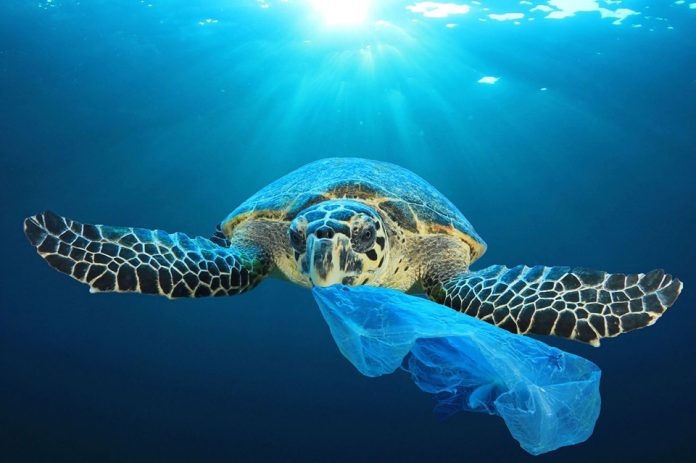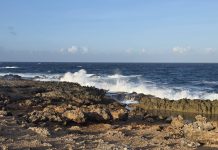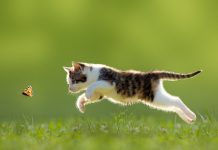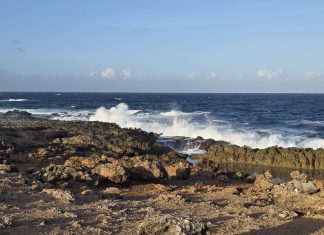Turtugaruba was founded on September 3rd, 2003 by a group of enthusiastic volunteers. Ten years earlier, in 1993, a Sea Turtle Recovery Action Plan (STRAP) was introduced in Aruba and the rest of the Caribbean as an initiative of the United Nations Environment Program (UNEP). Tom Barmes, who was working at DLVV (Deptartment of Agriculture, Husbandry and Fishery) was one of the writers of the STRAP for Aruba, together with Karen Eckert, director of WIDECAST (Wider Caribbean Sea Turtle Conservation Network). This is how sea turtle conservation started on the island following a plan that is still complied with today.
Tom formed a group of volunteers around him, because nature does not know office hours, like an organization such as DLVV. This group of volunteers used the name Widecast Aruba and today there are still a few of them active. They first started protecting the Leatherback Sea Turtle nests on Palm Beach and Eagle Beach. This group also investigated which other species of sea turtles use Aruba as their nesting habitat and which beaches are used by them. For a period of 25 years a study has been conducted in which every early morning the beach was being monitored in which now there is a good overview of sea turtle nesting activities.
There are 4 different sea turtle species that visit Aruba to lay their eggs, each with their own specific season:
– Leatherback Sea Turtle – Lederschildpad – Driekiel (March – September)
– Loggerhead Sea Turtle – Dikkopschildpad – Cawama (May – September)
– Hawksbill Sea Turtle – Karetschildpad – Caret (June – December)
– Green Turtle – Soepschildpad – Turtuga Blanco (July-November)
There also came a better understanding and overview of the biggest threats to the sea turtles existence in Aruba and how these problems should be tackled. Despite hard work, all those years, most problems have not really gone away, but luckily and thanks to the enormous efforts from the volunteers, the sea turtles are still here. On Aruba the sea turtles are threatened with extinction by pollution, driving on dunes and beaches with quads and 4×4’s and the loss of nesting beaches due to coastal development on behalf of tourism. Because coastal development comes with artificial light and artificial light is a mayor issue for sea turtles, mother turtle usually comes on shore at night looking for a dark beach to make her nest. However… a dark beach is hard to find here nowadays. Light causes stress and can result in her returning to the sea without laying her eggs. Artificial light causes disorientation for the baby sea turtles (hatchlings).
They crawl towards artificial light sources (like streetlights, hotel lights, etc.) and then they don’t find the sea. In the 90’s it was still a common occurrence to find a complete nest of about 70 hatchlings on the streets, dead, as cars drove over them. Thanks to their protection methods and a lot of time and effort, the volunteers of Turtugaruba have managed to get this under control. But for a sustainable solution there must be less light visible on the beaches and a strict regulation of it. Sea turtles simply need dark nesting beaches for their survival. It is clear that even more coastal development would not make the situation better for the sea turtles. Again, more hotel rooms? And even busier beaches? These are choices Aruba has to make. Do we want to leave a place for the sea turtles? Not only Aruba, but the entire world needs sea turtles! Sea turtles play a vital role in keeping our oceans healthy.
The Green Turtle, for example, keeps the sea grasses on the bottom of the sea short and therefore a healthy place for many fish to deposit their eggs. The Leatherback, the largest turtle of the world, eats mainly jellyfish and helps maintain the balance between jellyfish and plankton. Despite the threats that exist on Aruba, the turtles still keep coming. That’s why today Turtugaruba is especially proud of the volunteers and the many people and organizations of our community that carry a warm place in their hearts for the sea turtles. All four species are active now, which means all hands on deck in the field for us, the volunteers. We strive to keep the sea turtles, our oldest ‘repeat guests’, always coming back to Aruba and get the chance to reproduce here.
What you can do to protect the sea turtles
- Lights out for sea turtles.
- Do not drive on beaches.
- Do not litter. Do not leave any plastic cups, straws or bags on the beach.
- Remove obstacles from the beach.
- Do not disturb a nesting sea turtle. Do not attempt to touch the turtle but stay at a respectful distance (at least 10 meters).
- Do call Turtugaruba (24 hour Turtle Hotline: (297) 5929393).
For more information visit the facebook page Turtugaruba Foundation. q
















